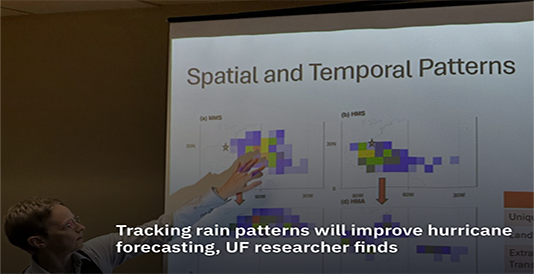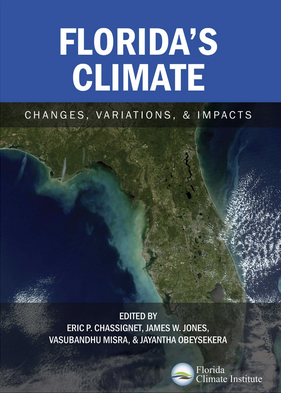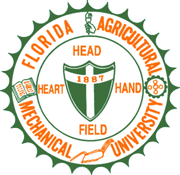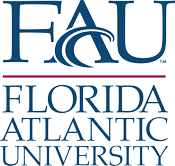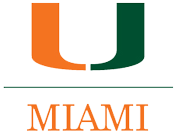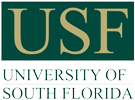Contact Person: Jones, James W.
Collaborators: C. Fraisse, K. T.Ingram, J.W.Jones
Institutions: University of Florida
Funding Agency: NOAA/OGP / RISA
Start: July 2009 End: June 2010
Status: Funded
Filed Under: Agriculture, Extension, Water
Abstract: The Southeastern Climate Consortium (SECC) conducts research to reduce climate and weather risks to agriculture and natural resources in Alabama, Georgia, and Florida, and is transferring existing and developing new agricultural tools for North and South Carolina. The overarching goal of the SECC is to develop a climate information and decision support system for the southeastern USA that will contribute to an improved quality of life, increased profitability, decreased economic risks, and more ecologically sustainable management of agriculture, forestry and water resources.Toward our overarching goal we have established six objectives. As a multi-institutional consortium, different member institutions of the SECC emphasize project objectives that build on the strengths of each institution. 1. To develop downscaled ENSO climate information and forecasts for the Southeastern USA. (Florida State Univ. and Univ. of Florida) 2. To enhance and extend agricultural applications of climate forecasts in the Southeastern USA. (Univ. Miami, Univ. Florida, Univ. Georgia, Univ. Alabama-Huntsville) 3. To develop and refine methods to incorporate climate forecast in water resource management in the Southeastern USA. (Univ. Florida, Florida State Univ., Univ.Georgia, Auburn Univ., and Univ. of Alabama-Huntsville) 4. To develop new and improved methods for integrating models from different disciplines for application of climate forecast information in agricultural and water resource decision making. (Univ. Miami, Univ. Florida) 5. To foster effective use of climate information and predictions in forestry and wildfire management. (Florida State Univ.) 6. To document and assess the utility and impact of climate forecast information provided to stakeholders in agriculture and water resource management. (Univ. Miami, Univ. Georgia)
Contact Person: Ingram, Keith
Collaborators: C.W. Fraisse, K. T. Ingram, J.W. Jones, K. Morgan
Institutions: University of Florida
Funding Agency: NOAA / OGP / TRACS
Start: September 2007 End: June 2010
Status: Funded
Filed Under: Agriculture, Extension, Water
Contact Person: Fraisse, Clyde
Collaborators: C. Fraisse, N.A. Peres
Institutions: University of Florida
Funding Agency: USDA Risk Management Agency (RMA)
Start: August 2010 End: July 2014
Status: Funded
Filed Under: Agriculture, Climate Sciences, Extension
Contact Person: Fraisse, Clyde
Collaborators: C. Fraisse, N.E. Breuer, J.O. Paz
Institutions: University of Florida
Funding Agency: NOAA/SARP
Start: July 2008 End: June 2011
Status: Funded
Filed Under: Agriculture, Extension
Abstract: Drought conditions are a frequent occurrence in the Southeast. The severe drought of 2007 created a pasture and hay shortage throughout the region, greatly impacting farm finances and profit. In the Coastal Plain of Georgia, the Florida Panhandle, and the Northeast Central and Southwest regions of Florida, pasture conditions were mostly very poor and hay supply was exhausted at the initiation of summer. Most cattlemen were forced to feed supplemental hay and grain. Hay farmers are also experiencing high fertilizer prices, with little chance to recover input costs. Many producers, as part of the recommended practices to cope with drought, were weaning early or selling off some animals to decrease their stocking rate, with average weight at sale down in many areas. According to the University of Georgia Center for Agribusiness and Economic Development, drought conditions that have persisted throughout 2007 have caused losses of $787.2 million in production losses to Georgia's agricultural sector. Pasture losses are $264.7 million of grass for grazing. Hay losses of $83.8 million are 59% of normal production value. The main objective of this research project is to better understand the decision making process of forage producers as related to drought and develop a decision support system specifically designed to help forage producers cope and adapt to drought conditions in the southeastern USA. A simple, yet reliable water deficit index will be monitored and forecast based on weather data collected by weather networks in Florida and Georgia, short term weather forecast provided by the NWS, and ENSO phases. The system will also include suggested management options for current and anticipated drought conditions and developed with intensive stakeholder participation. Training workshops and outreach events will be conducted to train extension faculty and producers in the use of tools developed under this project. Venues will include field days, extension staff training, and regional meetings of producer associations.
Contact Person: Fraisse, Clyde
Collaborators: C. Fraisse
Institutions: University of Florida
Funding Agency: Florida Strawberry Growers Association
Start: September 2006 End: August 2009
Status: Funded
Filed Under: Agriculture, Extension
Opportunities
Funding
- Resilience: Vulnerability and resilience management for socio-environmental systems in exposed territories | October 17, 2025 (Pre-Proposals)
- NSF Atmosphere Cluster (AGS-AC) | ongoing
- NSF Geospace Cluster (AGS-GC) | ongoing
- Duke Energy Foundation | Ongoing

